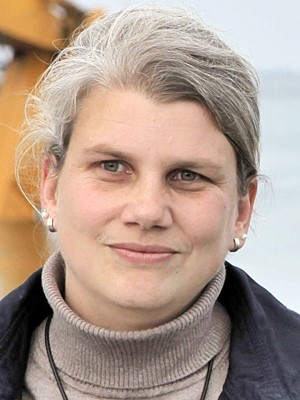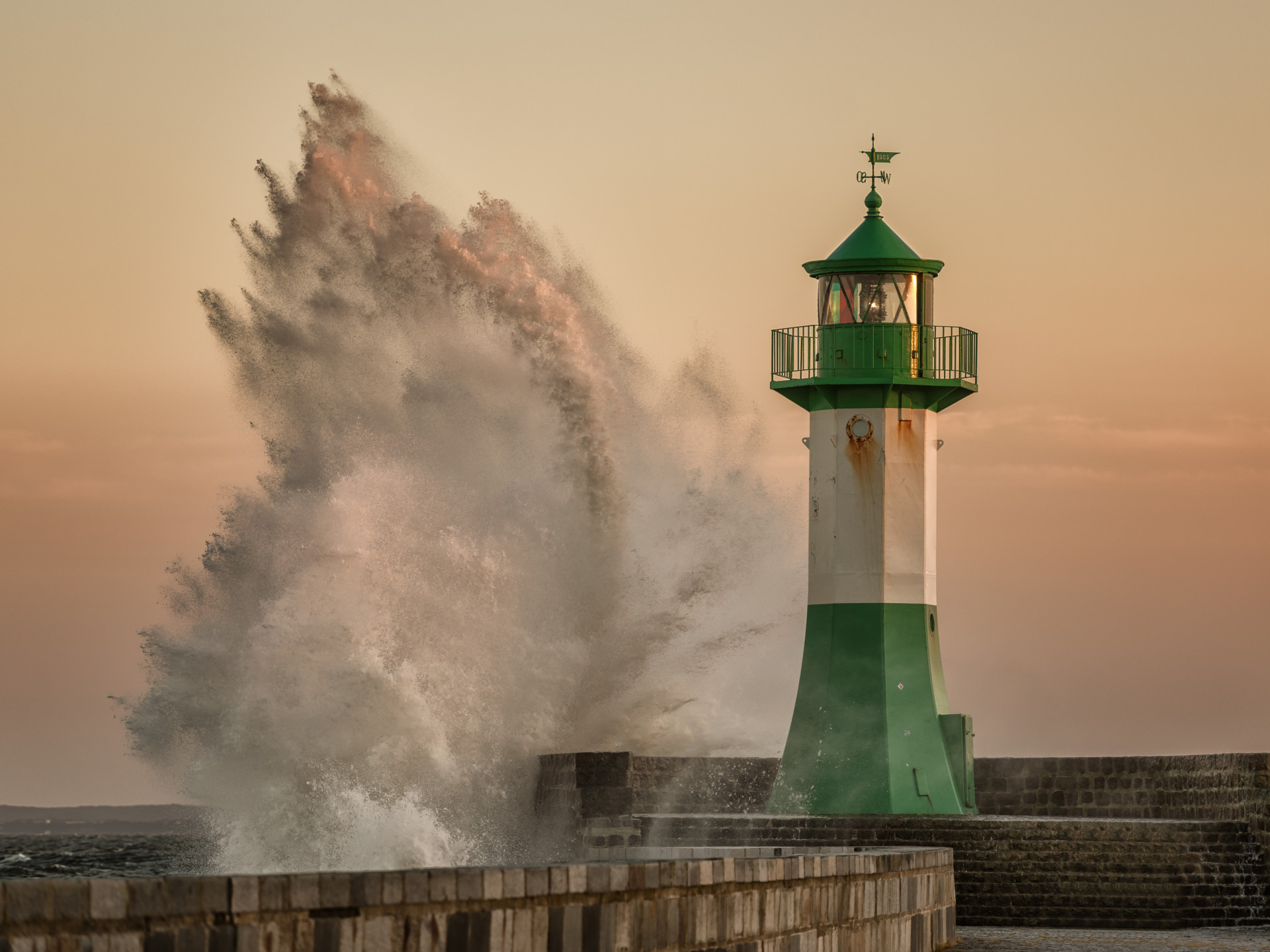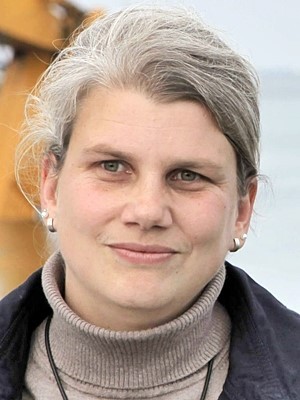“Storm surges are higher and more frequent”


This summer, many people are not going to the beaches of southern Europe, but to northern Germany. Insa Meinke works where the others go on vacation. She heads the North German Coastal and Climate Office at the Helmholtz-Zentrum Geesthacht and researches how climate change is affecting the region in particular.
Ms. Meinke, according to the Robert Koch Institute, traffic in Germany’s coastal regions has picked up considerably in the first months of summer. What impact is the boom in tourism having on the North and Baltic Seas?
The heavy traffic might be negatively affecting the general sense of well-being among residents and vacationers and possibly their health. But the crowd of people has no directly measurable effect on the regional coastal climate. We are unable to trace how local measures and events individually influence the climate and what their impact is. Instead, we need to look at the sum of all activities around the world by which we will either accelerate, slow down, or curb global warming over the course of this century. However, we are unable to reconstruct or quantify in retrospect which specific measure made which particular contribution.


How is global warming affecting Germany’s coasts?
The coasts also became warmer in recent decades. Compared with the period from 1961 to 1990, which we call the climate normal period, the average air temperature in northern Germany rose by about 0.8 degrees Celsius by 2015. The sea surface temperature of the North and Baltic Seas has also jumped considerably since the end of the 1980s. However, this warming is not linked to specific seasons. It occurs largely steadily throughout the whole year, although in northern Germany it has so far been somewhat less pronounced in the fall. One effect of this is longer vegetation periods, which now begin much earlier. At the same time, the last spring frost still occurs relatively late, increasing the risk of frost damage to plants after the start of the growing season.
Are you seeing further effects of climate change?
Dry spells in the spring now last longer than they did a few decades ago.
The warming has also resulted in fewer days with frost and ice, while summer days with temperatures topping at 25 degrees Celsius and hot days rising above 30 degrees Celsius have increased. In winter, Germany is experiencing significantly more precipitation. Storm surges are higher and more frequent. We can attribute this primarily to the rise in sea levels within the last century – something that is also measurable at Germany’s North and Baltic Sea coasts.
How will the trends you are observing develop in the future?
These trends will continue as global warming increases. The extent of the changes coming our way, including those at the North Sea coasts, will depend on how high the level of future greenhouse gas emissions is. If we manage to drastically cut such emissions, we could still achieve the goal of limiting global warming to 1.5°C. The changes in northern Germany would then be accordingly limited. But if we continue to release greenhouse gases into the atmosphere unchecked, we should expect to see global warming on a scale that will be noticeable here in northern Germany, too. In such a scenario, winter precipitation could increase greatly by some 40 percent, while sea levels at Germany’s coasts rise considerably. High storm surges would then be noticeably higher by the end of the century, and water levels that we currently classify as severe storm surges might occur much more frequently.
How is nature changing in northern Germany due to climate change?
We are already seeing major shifts in the habitats of numerous animal and plant species, both on land and in the North and Baltic Seas. Non-native, heat-loving species are invading the area and establishing themselves, while cold-loving species are disappearing. For example, anchovies and sardines are increasingly appearing in the North Sea, while cod are now more likely to be found in the northeastern part of the North Sea. On land, heat-loving woody plants, such as cherry laurel or walnut, are spreading rapidly within urban heat islands. Soil properties are also changing a result of the changes in precipitation and temperature. Climate change is negatively impacting the relationship between flowering plants and pollinators and how they interact as well.
What are some of the impacts on people?
In recent years, we have had real heat waves, which directly affect people’s health. In the worst case, heat waves can lead to death. Changes in the climate also impact the onset, length, and intensity of airborne pollen. Invasive species, such as common ragweed, are able to spread more rapidly as well. To some extent, we have been able to document the earlier onset of flowering phases in general, such as for hazelnut, alder, and birch in spring and grasses in summer. Pollen from these plants are among the allergens to which every second adult in Germany is highly sensitive. Climate change affects people in other areas, too. For example, it can impact energy supply through extreme weather events, rising temperatures, and changes in the availability of water. In the course of long periods of droughts, low water levels can result in falling groundwater levels and cause problems for the production of drinking water. By contrast, the more frequent occurrence of heavy precipitation can exacerbate wastewater problems. Particularly in winter, increasing amounts of precipitation combined with a simultaneous rise in sea levels can hamper drainage. We will also have to deal with ever larger areas that need protection from high storm surges.
What can we do to deal with these effects?
In order to deal with the effects of climate change, which are no longer avoidable, above all, we need to take timely and suitable steps to mitigate their adverse impact. Heat-warning systems would be one short-term solution. However, many measures will take longer to plan, and implementing them will also be a more time-consuming process. Such measures include strategies in agriculture and forestry, urban and regional planning, landscape and open-space planning, as well as urban development and architecture. Here in northern Germany, coastal protection also has to be part of the considerations, of course.
Related links
North German Coastal and Climate Office
North German climate monitor
North German Climate Map
Coastal protection requirements
Storm surge monitor
Can we prevent climate change from intensifying further?
Climate change will definitely proceed for many decades to come. To limit its scope and the ensuing serious consequences, we have to quickly and drastically reduce greenhouse gas emissions. Doing so will affect many aspects of daily life, such as how much energy we use, how we eat, how we dispose of waste, how we get around, and how we consume things. Civil society – meaning each and every one of us – has a key role in effecting change. Radically cutting carbon emissions is not a purely technical management task; rather, it is a crucial challenge for society. Without widespread acceptance by society, it will be difficult to overcome this challenge.
How is the Northern German Coastal and Climate Office helping in these efforts?
For nearly 14 years now, we have been preparing the findings from coastal and climate research specifically for northern Germany. There is a demand for the information we supply from virtually all areas of society that have to adapt to climate change, including people from politics, business, science, the media, education, as well as private individuals. In the process, we have also developed many services to provide information for recurring questions. We also lend our experience as an intermediary between science and society to the Helmholtz Climate Initiative and to research on regional climate change.

